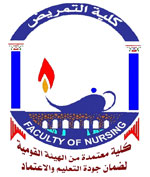Abstract Background: Preconception health includes health of woman and man before pregnancy to reduce risks that woman may face during pregnancy and enhance fetal and maternal outcomes. This study aimed to: identify and increase knowledge of the undergraduate nursing students concerning preconception health and pregnancy. Methods: A descriptive cross-sectional study design implemented on 320 nursing students at Faculty of Nursing, Assiut University, tool divided into three parts; part one included students’ personal data, part two included eight ended questions directed to students to identify their knowledge regarding preconception health issues and part three designed to evaluate issues related to pregnancy and contained ten ended questions. Results: 38.4% and 31.6% of nursing students had good score of knowledge regarding preconception health and pregnancy respectively, there were statistical significant differences between preconception health and students’ gender, age, university grade and previous perceived obstetric course (P-values=0.013, 0.00, 0.00 and 0.00 respectively). Also, there was a relationship between score of students’ knowledge regarding pregnancy and their age, university grade and previous perceived obstetric course (P-values=0.00, 0.00 and 0.00 respectively). Conclusion: There were relationship between total score of students’ knowledge regarding preconception health and pregnancy with student’s age, university grade and previous perceived obstetric course. Recommendation: Further research should include all university students in practical versus theoretical faculties to identify how the knowledge and information gaps.
قسم البحث
مجلة البحث
American Journal of Nursing Research
المشارك في البحث
الناشر
NULL
تصنيف البحث
1
عدد البحث
Vol. 7, No. 4,
موقع البحث
NULL
سنة البحث
2019
صفحات البحث
574-580
ملخص البحث

